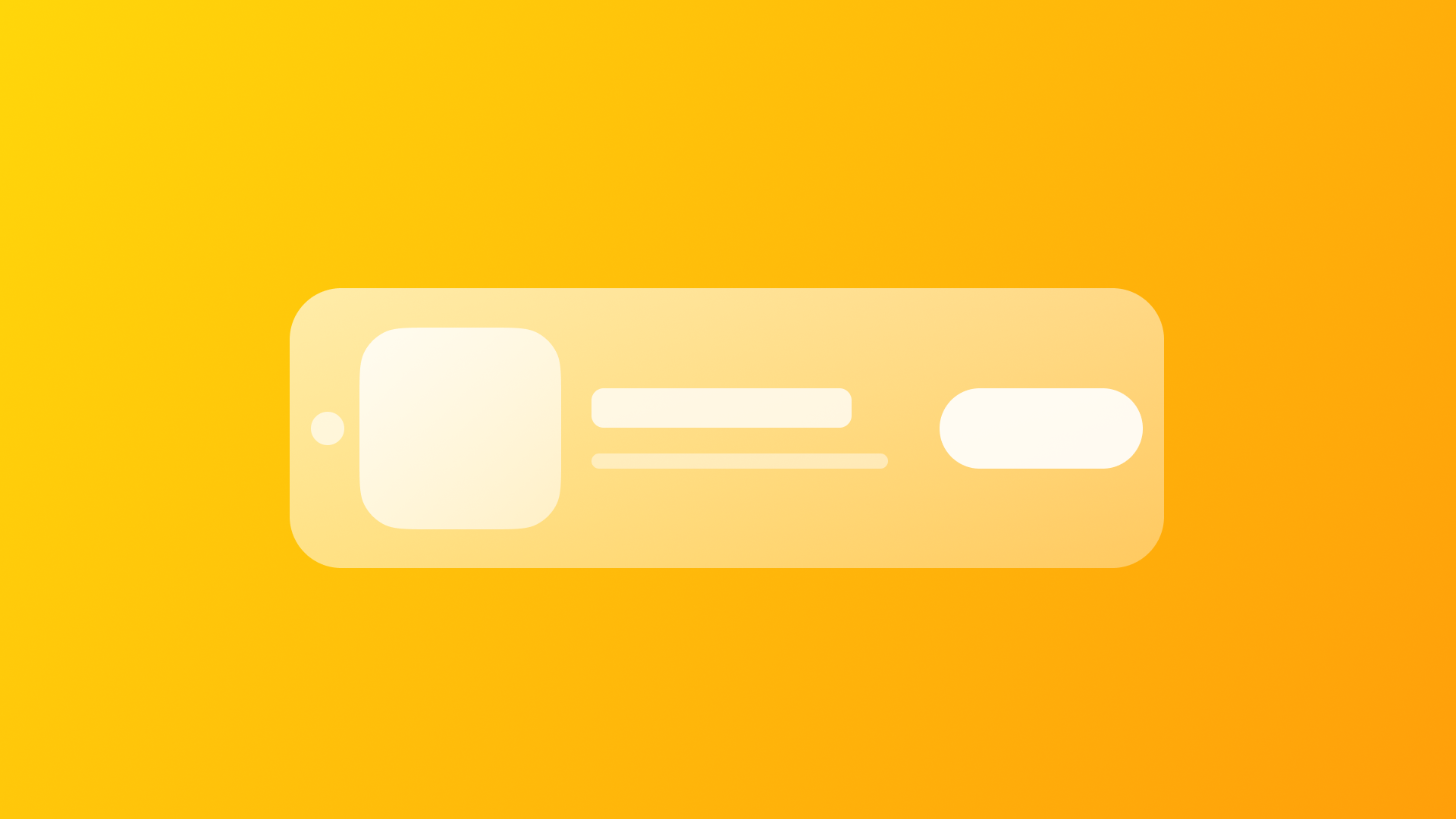
Promoting your app with App Store Marketing Tools
Explore the available tools provided by Apple to support developers in promoting their apps in and out of the App Store.
There are many ways to promote your apps on the store and beyond. To support developers getting people to download their apps Apple provides a set of tools and features, which we will explore in this article.
As an example, we will use Dots on Faces, an app celebrating American conceptual artist John Baldessari. It simply does what it says, putting dots over faces.

App Store Marketing Tools
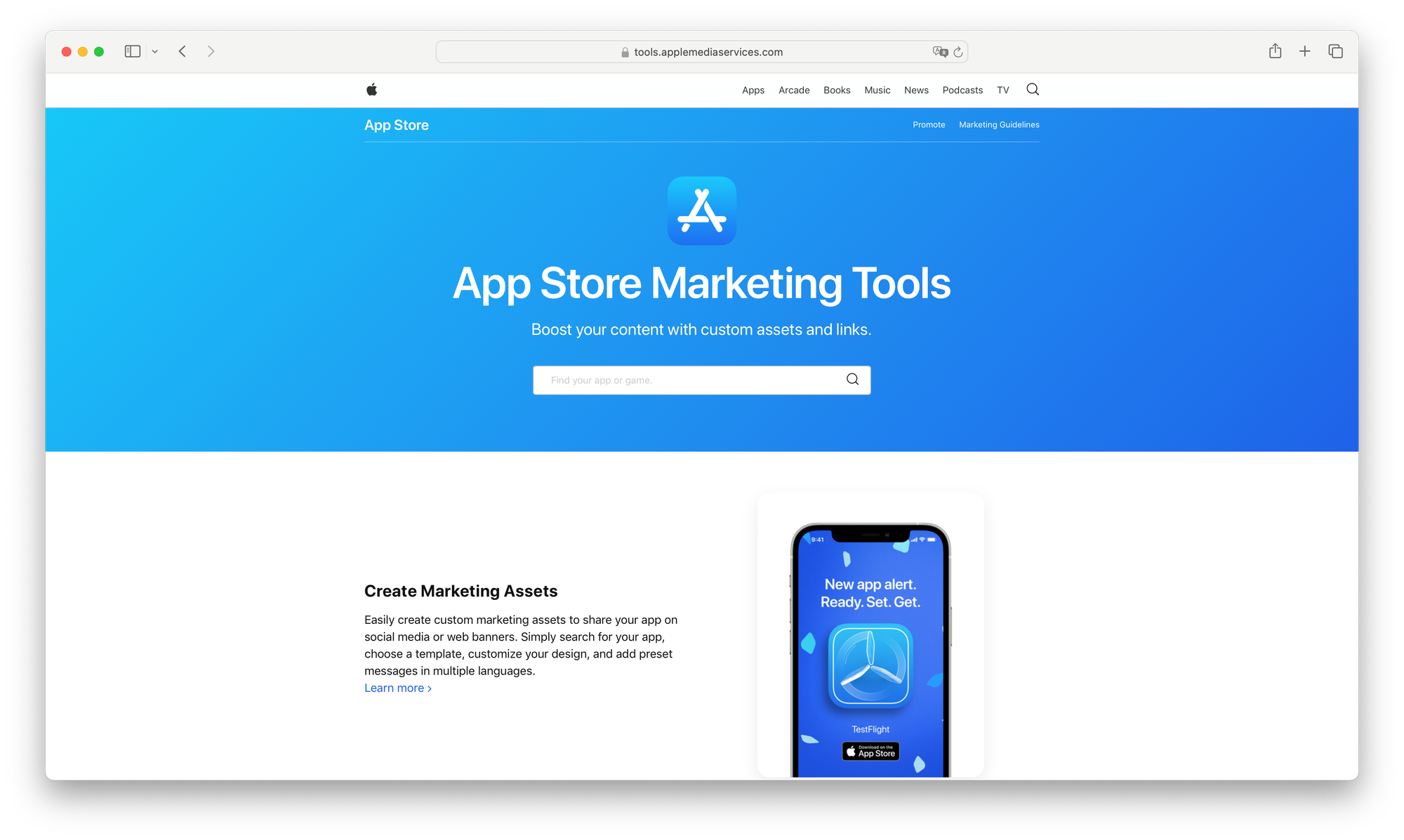
Apple provides a nifty and convenient tool to create promotional material for your app with just a few clicks. On their App Store Marketing Tools, you can look up your app via the search field and then tap into some nice automated features to create promotion materials.

You will get many valuable links and snippets to embed on your websites. They come in handy and are usually the topic of many Stack Overflow or Reddit threads on how to find this information conveniently.
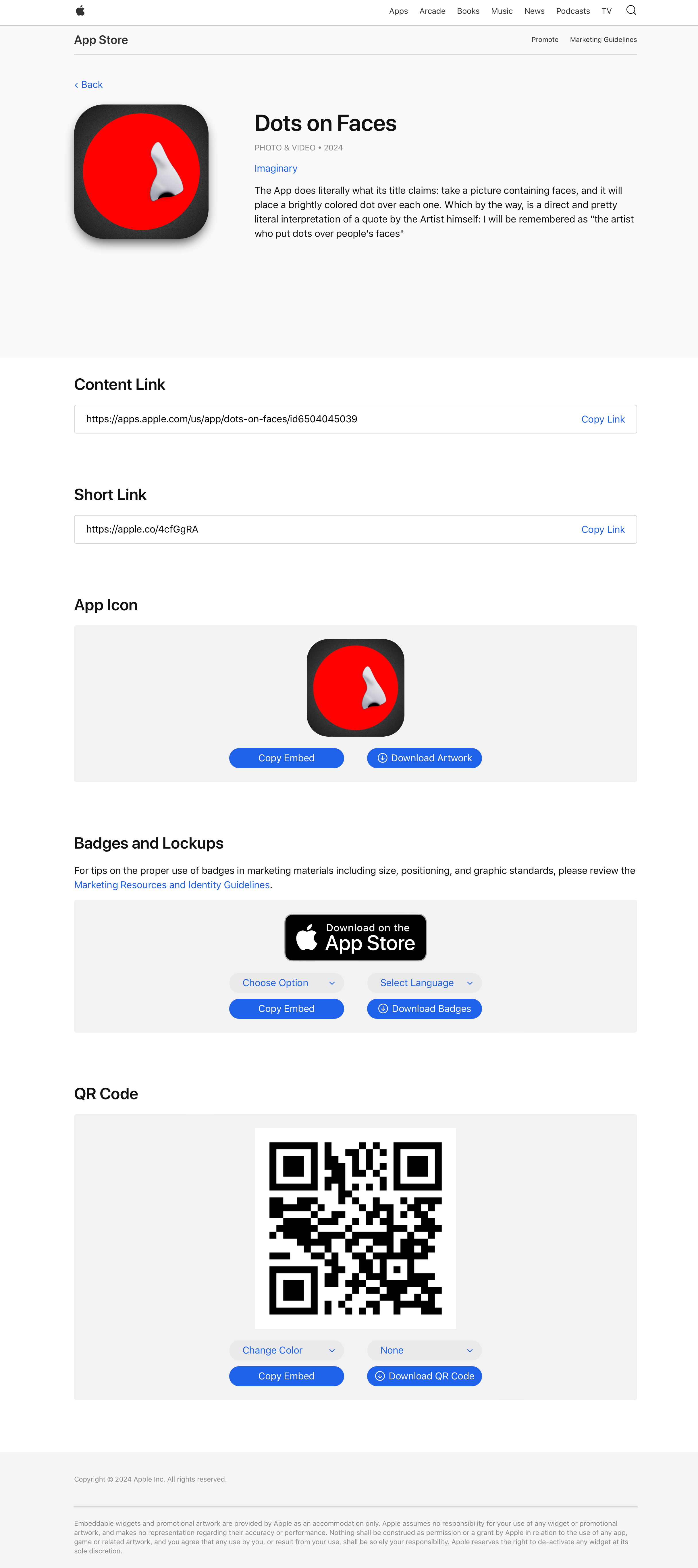
Let’s dive deeper into the generated resources, which are:
- Content Link
- Short Link
- App Icon
- Badge and Lockups
- QR Code
1. Content Link
It is the link to the app on the store and may look something like this
https://apps.apple.com/us/app/dots-on-faces/id6504045039?l=en-GB
The path is constructed by:
- The market information:
/us - The app name:
/dots-on-faces - The app ID on the store:
/id6504045039 - Additional parameters:
?l=en-GB
Interestingly, there are some of these components you can customize to improve the experience even further. For example, the path /us corresponds to the App Store Market, United States in this case. It can be changed to represent other markets like Germany (/de), Italy (/it), or the United Kingdom (/uk) for more granular control.
The App Name is composed of the app chosen for the product in App Store Connect and then followed by the App ID. The App ID is what will uniquely identify your app.
Additional parameters, like ?l=en-GB for the localized App Store description in British English, can serve to steer users toward specific localizations of your product page.
Also, you can omit parts of the URL. If you remove the market path, the user will be automatically redirected to the product page of the store their Apple ID is set to, provided that the app is available in their market.
Striping down the non-essential parts of the generated URL you can have a shortened URL like the following:
https://apps.apple.com/app/id6504045039
2. Short Link
Apple allows you to create a Short Link for your app that you can then share in places where the number of characters counts, for example on X (formerly known as Twitter).
In our case, a shorted URL for the above example may look like this:
https://apple.co/4cfGgRA
3. App Icon
The app icon is automatically loaded and you have the option to copy its embed code or download the artwork.
When you download the artwork, you will get a PNG file with transparency in a squircle format and a resolution of 1000x1000 pixels.
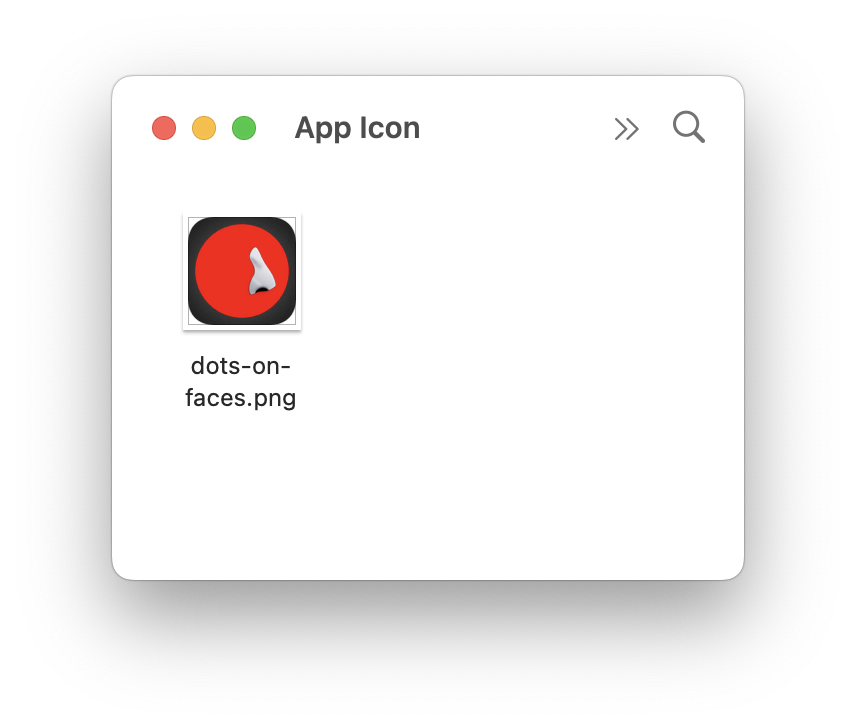
The embed code uses the image and links to the store. You can easily customize the HTML to reflect your desired sizes and more importantly the URL to the desired App Store destination.
<a href="https://apps.apple.com/us/app/dots-on-faces/id6504045039?itscg=30200&itsct=apps_box_appicon"
style="width: 170px; height: 170px; border-radius: 22%; overflow: hidden; display: inline-block; vertical-align: middle;">
<img src="https://is1-ssl.mzstatic.com/image/thumb/Purple211/v4/ae/22/81/ae2281f1-68dc-f7b2-e67b-5f88115ee325/AppIcon-0-0-1x_U007ephone-0-85-220.png/540x540bb.jpg"
alt="Dots on Faces"
style="width: 170px; height: 170px; border-radius: 22%; overflow: hidden; display: inline-block; vertical-align: middle;">
</a>Example of generated code for embedding your App Icon in your websites.
4. Badges and Lockups
Additionally, you will get the classic App Store badge and you can customize between black and white as well as any language supported by the App Store.
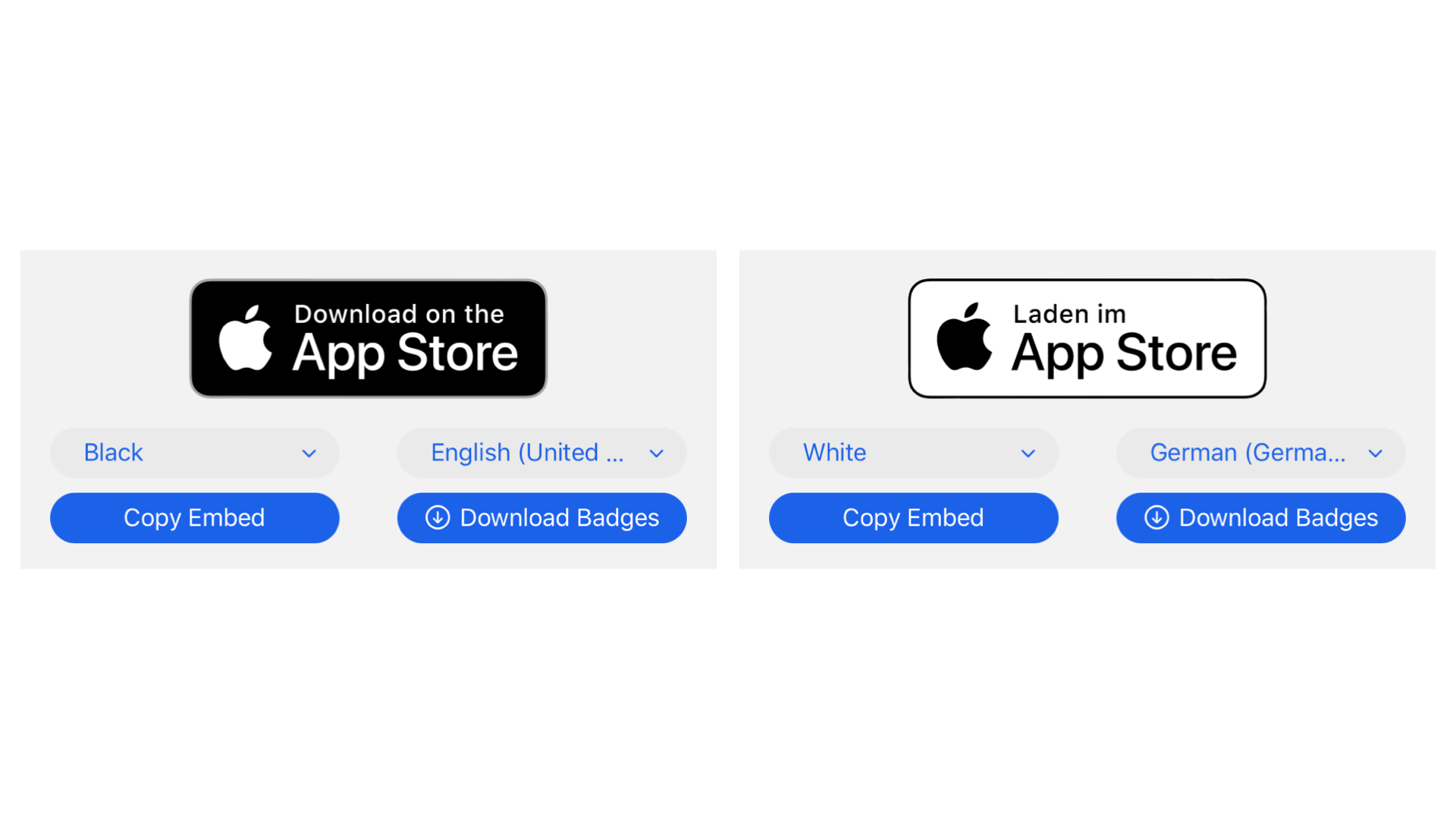
You can download the badges directly and you will get SVG files for both black and white as well as for downloading or pre-ordering the app on the App Store. You can then use them in the creation of customized marketing materials later on, always respecting the guidelines on how to use them properly.
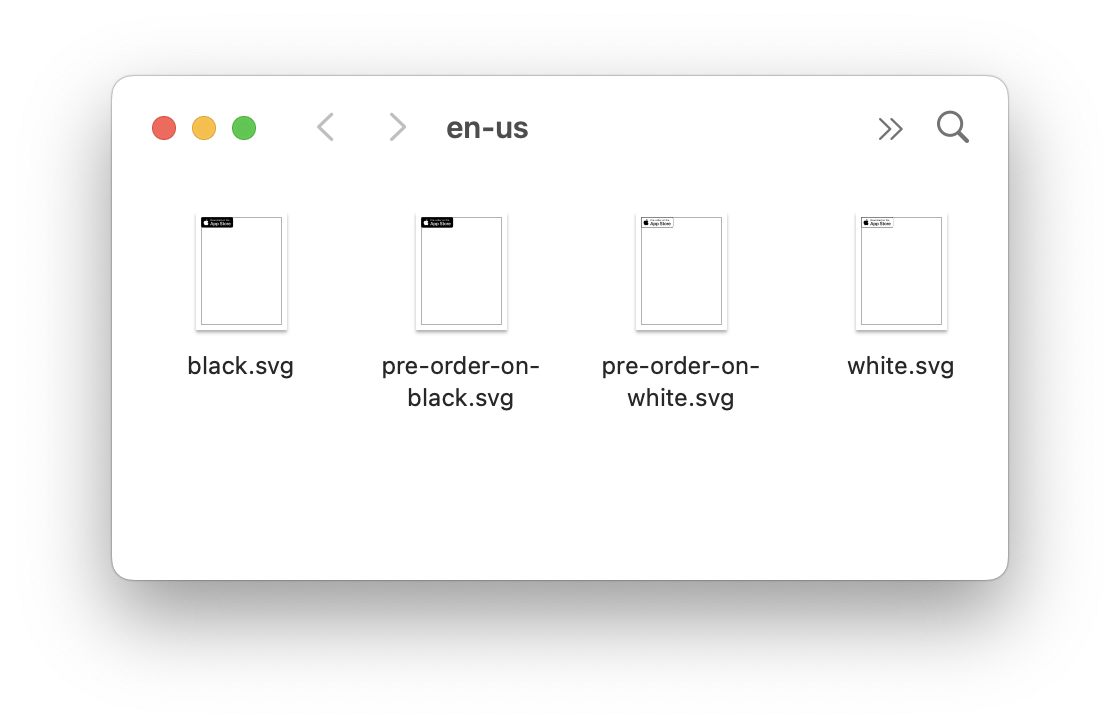
Based on your configuration of color and language, you can copy the embed code that will allow you to add the badge to any website.
<a href="https://apps.apple.com/us/app/dots-on-faces/id6504045039?itsct=apps_box_badge&itscg=30200"
style="display: inline-block; overflow: hidden; border-radius: 13px; width: 250px; height: 83px;">
<img src="https://tools.applemediaservices.com/api/badges/download-on-the-app-store/black/en-us?size=250x83&releaseDate=1718582400"
alt="Download on the App Store"
style="border-radius: 13px; width: 250px; height: 83px;">
</a>Example of generated code for embedding the App Store Badge in your websites.
If you consider to also adjust the size of the badge, consider tips on the proper use of badges in marketing materials including size, positioning, and graphic standards as shared by Apple in the Marketing Resources and Identity Guidelines.
5. QR Code
You can easily create a QR code for your app. Apple provides options between black, white, and blue for this design and allows you to choose whether you want to feature the App Icon as part of the QR code or not.
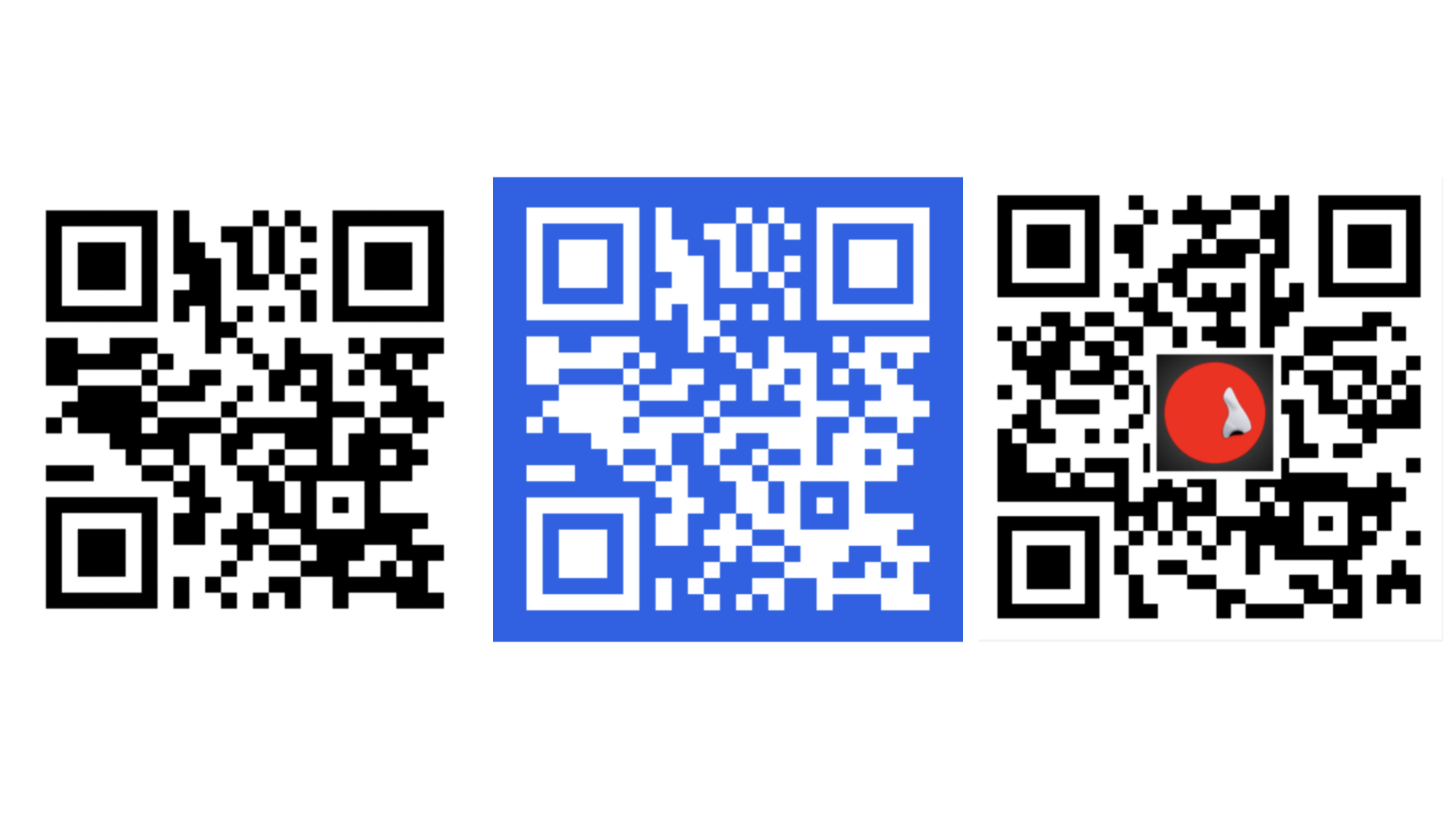
You don’t have to limit yourself to these designs. You can generate your own QR code aligned with the visual style that suits your visual identity with any tool you want.
For the QR Code, Apple also provides a generated code to embed in any of your websites.
While this may add loading resources from external URLs, it is convenient in case you want to add QR codes to any platform without the need to host the image on your own.
<img src="https://tools-qr-production.s3.amazonaws.com/output/apple-toolbox/3feef2e9cfd59afb782dc3a6d822ef34/07d09c6920f831bba2e04a96136a339d.png">Example of generated code for embedding the generated QR code in your websites.
These basic functionalities of the App Store Marketing Tools provide a great way to get started with links, embed codes, badges, and icons. But this is not the only marketing tool Apple makes available, there is more!
App Store Promotional Material
You can also generate promotional material directly within the App Store Marketing Tools by heading to the Promote section. You can search for your app in the search box to get started and create posts and visuals that stand out with custom messaging that can easily be shared across platforms.
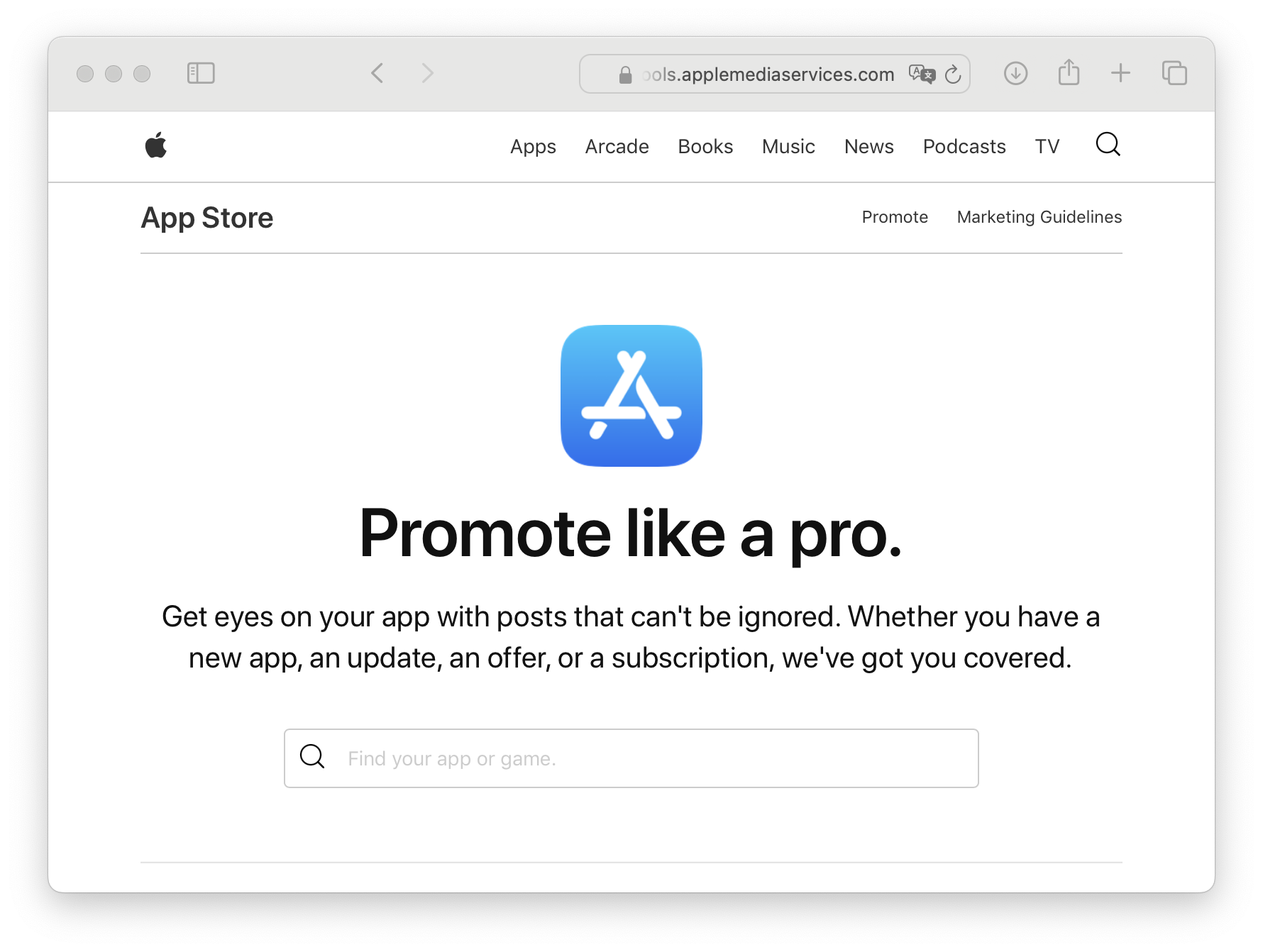
Customize your design
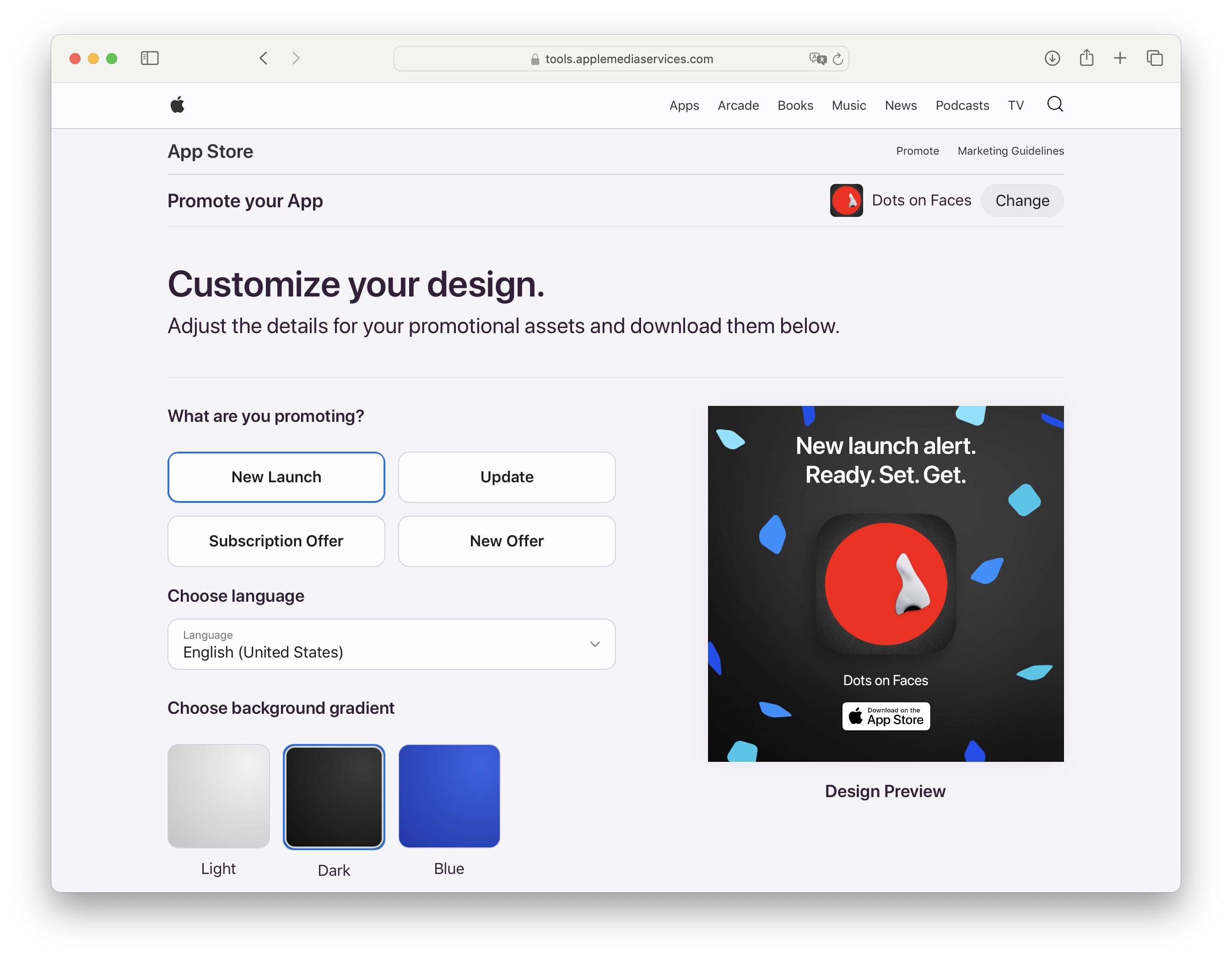
First, you can adjust the details of your design to stand out. You can choose between promoting: a New Launch, an Update, a Subscription Offer, or a New Offer. Then you can choose the language and among the background gradients Light, Dark and Blue. Here are some examples:
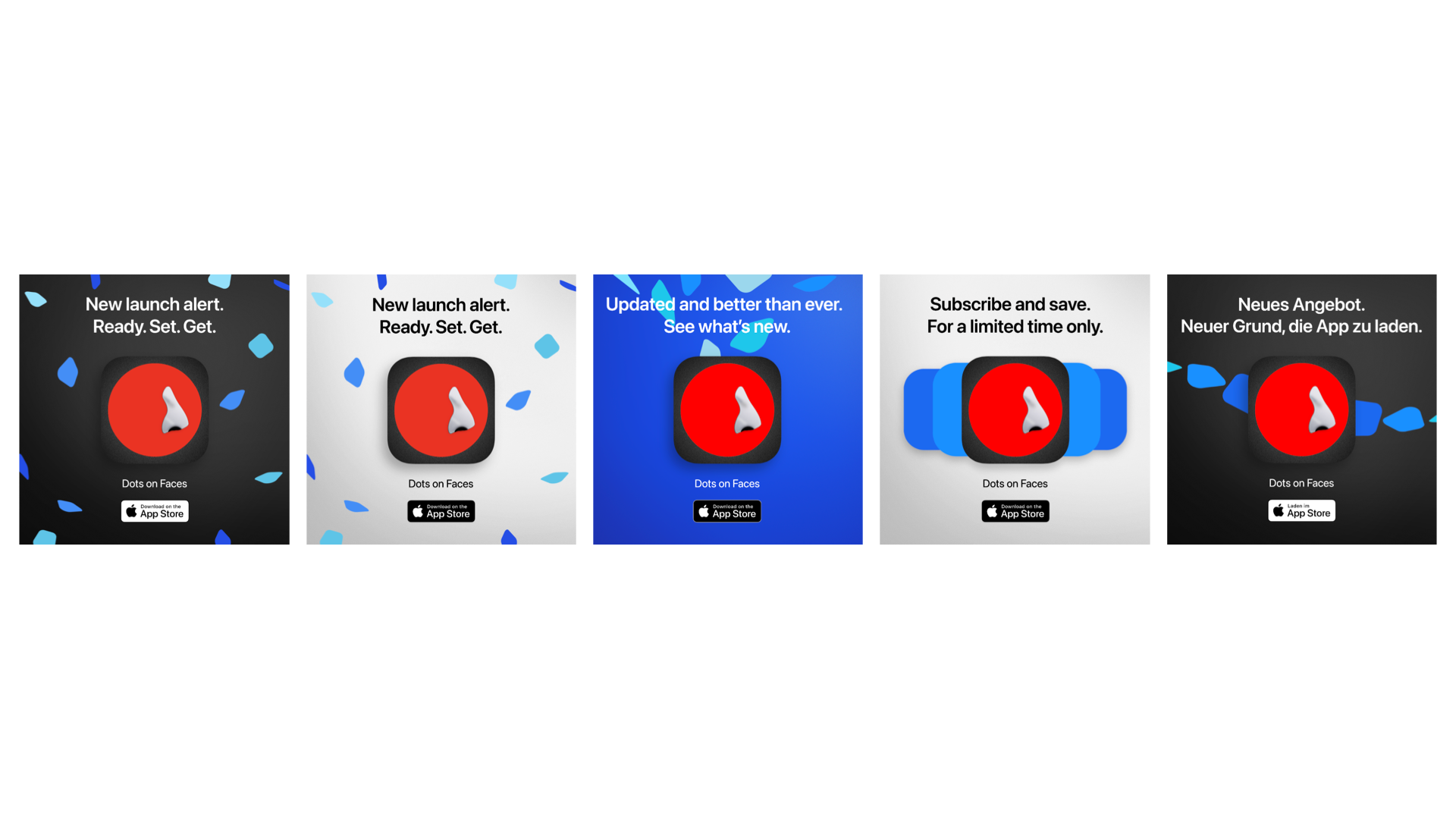
Then you can select the sizes you want to create, which configures the website to create assets with typical sizing for posts on social media, standard web ad banners, etc.
You can choose from:
- Square Post - 1080x1080
- Story Post - 1080-1920
- Landscape Banner Ad - 1280x720
- Portrait Banner Ad - 720x1280
- Link Card Preview Image - 1200x628
You can preview all variants on the website and then directly download the assets, resulting in a ZIP file with all variants provided as PNG image files.
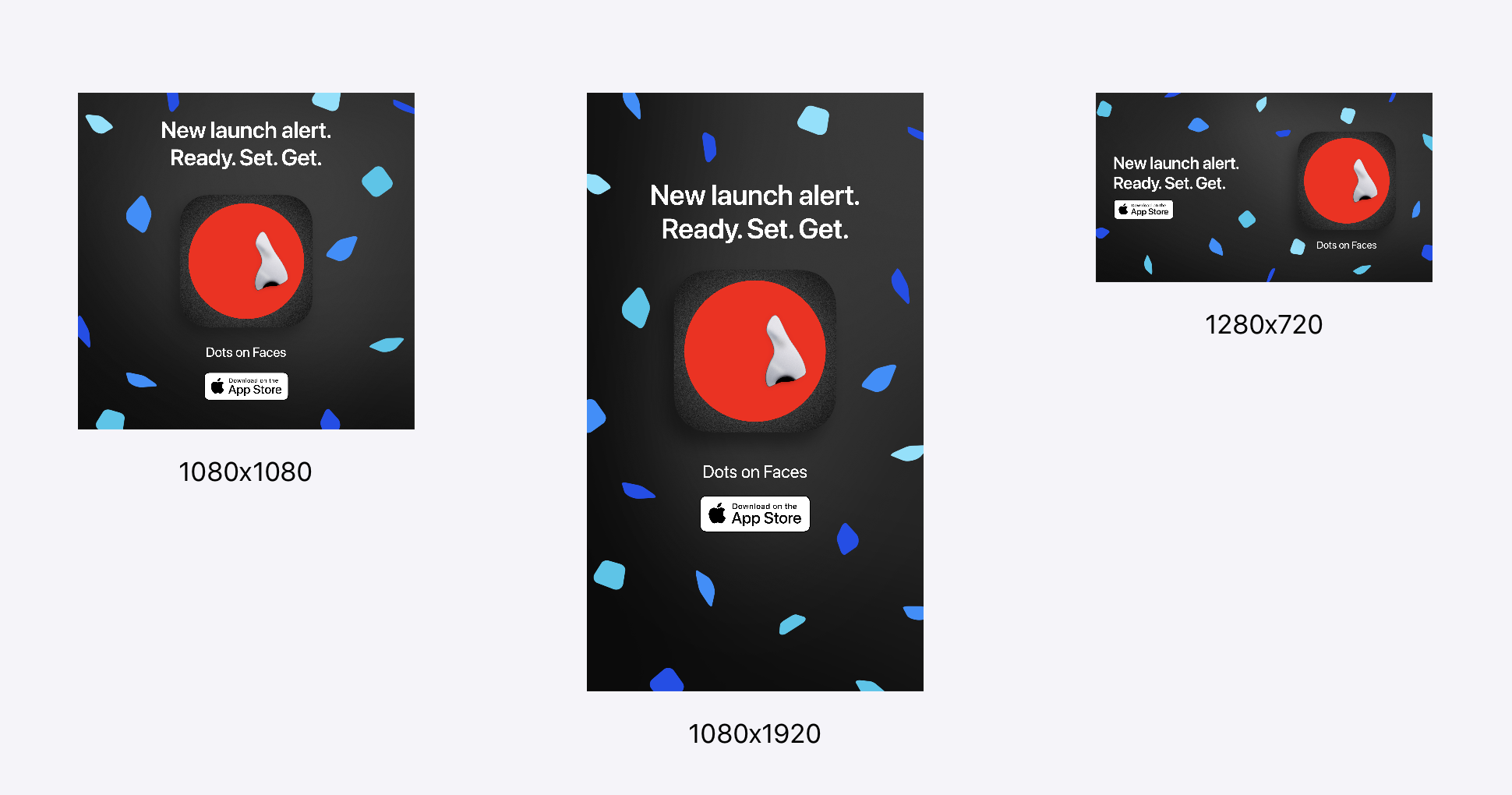
Apple provides a simple copy message that you can use to share your app with the world. Depending on the language selected and the type of promotion, the website will generate an appropriate copy for that use case.
Lastly, the website allows you to conveniently access the Content Link, and the Short Link and provides the ability to generate a QR Code.
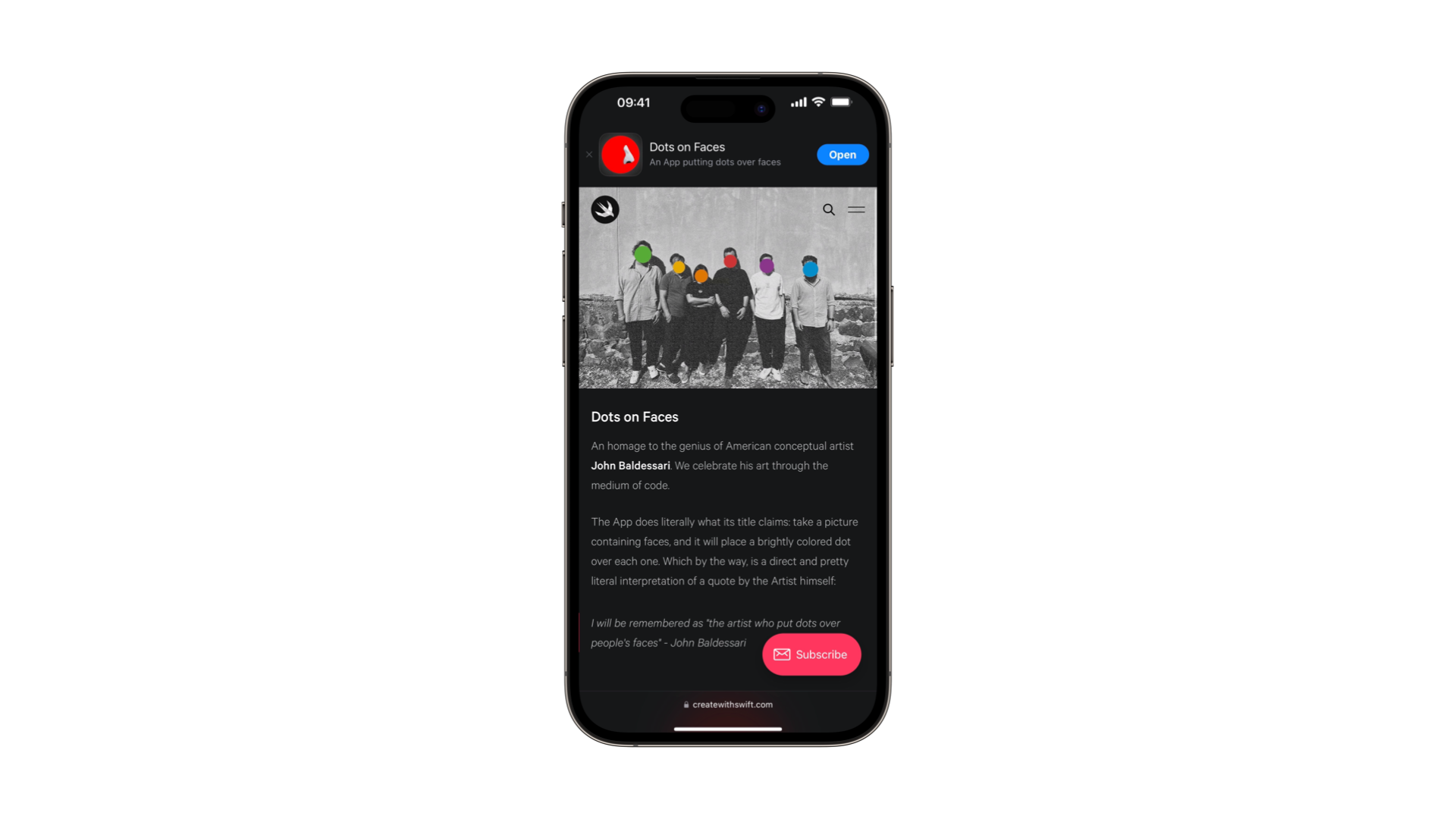
The App Store Marketing Tools don’t replace the value of custom marketing material, sophisticated copy, and elaborated campaigns to market your product. Yet they provide a great starting point and a very convenient way to quickly access ready-to-be-shared material.
Smart App Banner for your website
Consider also adding a Smart App Banner to your website to promote your app.
If a user is browsing your website, a Smart App Banner can create a known and trusted experience that promotes installing or using your app unobtrusively on the top of the web view. It can easily be dismissed with a close button and does reappear if the user goes to the website again.
If the app is not installed, the banner invites the user to view the app on the App Store. If the app is already installed, the banner changes to invite the user to open the app. It is a nice little detail and a great way to make discovery and access to your app even easier.
Implementing a Smart App Banner is quite simple and just requires a meta tag in the head element of your website like this:
<meta name="apple-itunes-app"
content="app-id=6504045039, app-argument=myURL">The only required parameter is app-id, which contains your app’s unique identifier.
The parameter app-argument can be omitted. It gives you the possibility of adding URLs for linking inside your app with Deep Links, for example.
App Store Promote
Another great way to promote your app is by suggesting your app to the Apple App Store Team. This can be done in the Apple Developer Portal by filling out a simple form provided by Apple.
You need to provide your Developer Name, Developer Website, and information about the developer team. You can also provide context regarding inclusion & diversity in your team.
Then, you are asked to provide details about your app. You can talk about:
- A new app to be launched soon
- An in-app event for your app on the store
- An update for your app on the store
- A story idea for your app or its development process
The form asks for:
- The app name
- A description of the app in 1000 characters or less
- Which platform the app is built for
- Whether it is for kids and,
- Which languages and regions are supported
You can optionally provide links to demo videos, presentations, or the developer website.
Apple also asks about the business model for the app, which can be chosen among free, freemium, subscription, paid, and paymium.
Optionally you can elaborate your marketing plans for the app, tell its story, how it stands out, and what makes it unique or different.
The App Store team will review the submission and consider it for their showcases of apps that make an impact around the world. This could for example happen as an app spotlight in the editorial section of the App Store or through other means.
If you are promoting an event in your app, Apple asks you to communicate it with them through the form at least 3 weeks in advance for them to be able to consider it for their promotion cycle.
Featuring Nominations
In WWDC 2024 Apple introduced a new way to share stories with the App Store Team. Soon you will be able to nominate your apps for featuring on the App Store, share exciting moments with marketing assets generated for you, and deep link to specific content in your app from custom product pages.
To have a look at these new possibilities consider the session “What’s new in App Store Connect” and check out the App Store Distribution & Marketing Forum on the Apple Developer Forums.

Conclusion
There are many ways to promote your app. As a developer, you should optimize your App Store product pages and make use of all the available features to make your app stand out in the store.
Additionally, the App Store Marketing Tools provide an easy way for you to access key information about your app, generate badges and code snippets for embedding on your website, as well as standardized marketing material that can be shared on any platform.
All of this is just the beginning of your app promotion strategy. It is up to you to reach its full potential, making your app known, building communities, and much much more!

